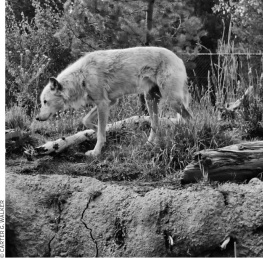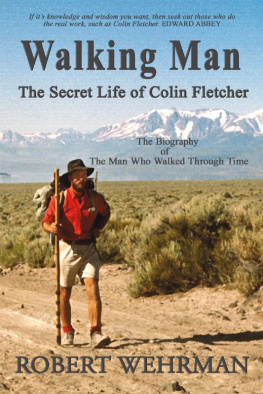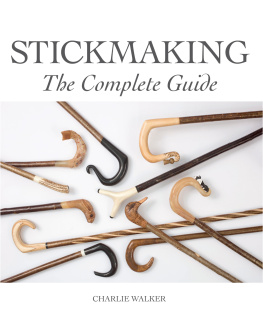THIS IS A BORZOI BOOK PUBLISHED BY ALFRED A. KNOPF
and who passed the information along.
C.F .
Preface to the Fourth Edition
This fourth edition arrives seriously late: Walker III appeared in 1984, and most of its gear gospel, even much practice gospel, is now old testament. You can blame the updatage delay on my stalwart powers of procrastination, but at last, here we go again. With a difference.
This time, two of us are at it.
Im now pushing 80, dont expect to live much beyond 120, and am already backpacking far less ambitiously. So Im no longer in intimate touch with the most current gear. Obvious solution: co-opt a partner. The trick: find the right one. Perfection, it seemed to me, would be a longtime backpacker, a generation or two younger than me, conversant with gear but no mere gearhead; a proven writer, in tune with the book.
Chip Rawlinswho helped me with snowpack forecasts for my last book, River, and whom Id met briefly in Wyomingbelongs, in his own words, to the generation inspired by the first edition of this book. With frame-pack squeaking and agave staff in hand, I set out in the late 1960s to explore, and have made a life of it. Along with walking for pure pleasure, he worked as a backcountry ranger. In the late 80s and early 90s he shifted to wilderness hydrology and acid rain monitoring; in the course of this work he logged over 4000 miles afoot and another 1600 on skisand received the U.S. Forest Service National Primitive Skills Award. Since leaving the Forest Service in 1992 to write, he has mapped glaciers, studied mountain streams, and thereby kept his soul in condition. His ongoing love affair with walking has so far off-sprung two poetry books and two of prose.
When we talked about coauthorship, Chip seemed eager. And here we are, in tandem.
Every part of the book has passed our twofold scrutiny. Much of the old nontechnical stuff stood up okay, but Ive nipped-and-tucked it all and refurbished the writing to my new satisfaction. Chip has backpacked many miles researching equipment and has rewritten nearly all the material on gear and some on technique. So the book speaks with two voices.
In a sense, so did earlier editions. Vanna Princes illustrations backed up the text beautifully. Vanna was keeping the faith for this edition, too, and had nearly all the drawings done when she went on a long-awaited European trip; but minutes after getting off the return flight she suffered a massive stroke. She died 10 days later. Chip and I feel a loss that is more than professional. Even in late life, Vanna sparked; illuminated; leavened. We miss her. But her work lives on in this editionand will, in some form, in any future revisions.
Extending that thought: perhaps I should admit my fragrant hope that by handing the walking staff over to Chippartially this time, totally later, if all goes wellIve given the book a chance to live on, post-Fletcher.
In this edition, for clarity, well preface all my material, old and new, with the label COLIN and all Chips with the label
CHIP: Reading this edition might seem like listening in. But The Complete Walker IV is more than just a private talk between Colin and me. During the long and healthy life of this book, readers have written bales of letters ranging, as Colin observed, from bloody silly to brilliant. And the result is a deepening of our collected experience.
Not all the experience that went into Walker IV took place out-of-doors. During the rewrite, Colin and I also worked closely with trusted advisors, editors, and our all-important illustrator. By the time of her death, Vanna Prince had finished more than a hundred new drawings for this book. To get the details right, she made a pilgrimage to Wyoming, sketching away cross-legged as I stuffed packs, set up tents, and demonstrated stovesand learned to appreciate her as an artist and, no less, a friend. Looking through her unfinished sketches can still catch me up. But six months after she died, the momentum of writing and publishing carried us to the point where we had no choice but to find an illustrator for new drawings and alterations to some of Vannas old ones. And Hannah Hinchman, who added drawings to my book Skys Witnessalong with publishing two fine books of her ownhas stepped in to complete the work.
In the years since the third edition appeared, some good things have worn out. In their stead, designers and makers have proposed new means of getting us over the next hill and out of the rain. Weve tried them out, adopting the most useful and graceful solutions: as we walk, so we learn.
New alloys, resins, fibers, and manufacturing techniques have thoroughly changed the look and feel of outdoor gear. Simple things like the water bottle have elaborated into hydration systems with filters, pumps, bladders, tubes, and valves. And, for good or ill, the cottage-industry fringe that once produced outdoor equipment has become a $5-billion global industry.
To keep track of whats what has become difficult in itself, let alone determining what works and whats just passing fancy. For gear and technique are not separate matters; rather, one nudges the other, and is in turn nudged back. Yet even as we differ spiritedly on the particulars, in the long run (or long walk) some changes simply prove more embraceable than others. For instance, these words were laid down not with a fountain pen, nor yet with a typewriter, but on a computer. Or computers: Colin uses an IBM-clone and I use a Macintosh laptop.
Other practica: Given the lengthening combination of mailing address, phone number, and Internet Web site, the contact information formerly in the text has mostly migrated to appendixes. Be aware too that although frequent mention is made of trade names, we elected to leave out the , saving gallons of ink.
The tension between our inexhaustible monkey-fascination with the new and strange, and the immemorial truth of nature is not limited to the terrain of this book. When we shift our gaze to the backcountry itself it is clear that while some things (like gravity) have not changed, others have. Human population in 30 years has leaped and bounded. Permits, user fees, and restrictions in general have predictably increased, while favorite and once remote campsites are overrun. And as we seek out ever remoter and quieter spots, the horde seems poised to follow.








